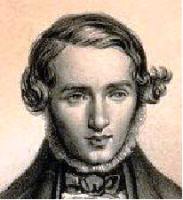Presents
Jakob Rosenhain
|
|
 |
Soundbites courtesy of Steve Jones |
String Quartet No.3 in d minor, Op.65
Jakob Rosenhain (1813-1894 also known as Jacques) was born in the German city of Mannheim where he studied piano with Jakob Schmitt and composition with Johann Kalliwoda. He was a child prodigy and continued on as a piano virtuoso at one point touring with Nicolo Paganini. He was widely considered one of the finest pianists of his day and after the death of Johann Nepomuk Hummel in 1837 succeeded him as Music Director (Kapellmeister) in Weimar. At the same time, he continued making tours, especially to Paris where he often took part in chamber music concerts, eventually settling there. In Paris, he befriended and impressed Cherubini, Rossini and Berlioz who helped to promote his music. Hearing him play, Mendelssohn remarked, “When Rosenhain plays we hear the music as it was intended to be played and not how the performer wishes to play it.” His music was held in high regard not only by the musical public but also by composers such as Brahms who performed a Rosenhain piano concerto at his first public concert.
Although his String Quartet No.3 in d minor, Op.65 was published in Paris by the firm of Richault in 1864, the date of composition, judging from its style, suggests that the quartet was composed perhaps as much as a decade, if not more, before its date of publication. While we have obtained the score, we have been unable to obtain a set of parts. However, the well-known and widely respected music scholar Eric Schissel has made our set of parts from the score. The first movement begins with a stirring Allegro appassionato. The cello gives forth the exciting main theme over the pulsing 8th notes of the other voices, beginning in its lower registers but slowly rising to a dramatic climax when the others join in. The second theme, equally lyrical, is gentler and somewhat delicate. The second movement, a lovely, highly romantic Andante molto espressivo, begins with a long cantilena theme in the first violin. It might be likened to a song without words. Next comes a Scherzo, Allegro risoluto, ma non troppo vivo. The first part of the main theme is dominated by its rhythm. The second half of it surprises as it turns into a south German Ländler. The contrasting trio is interesting in that a long-lined theme in the lower voices is accompanied by nervous running triplets. The main theme of the finale, Allegro molto agitato, is also characterized by its rhythm, creating the effect of a galloping, bumpy horse ride. The development uses the theme as an accompaniment to a more lyrical, singing second subject.
Long out of print, we are pleased to make this fine work available once again and recommend it not only to amateurs but also to professionals looking for a fresh work from the mid-romantic era.
Parts: $24.95
Parts & Score: $31.95